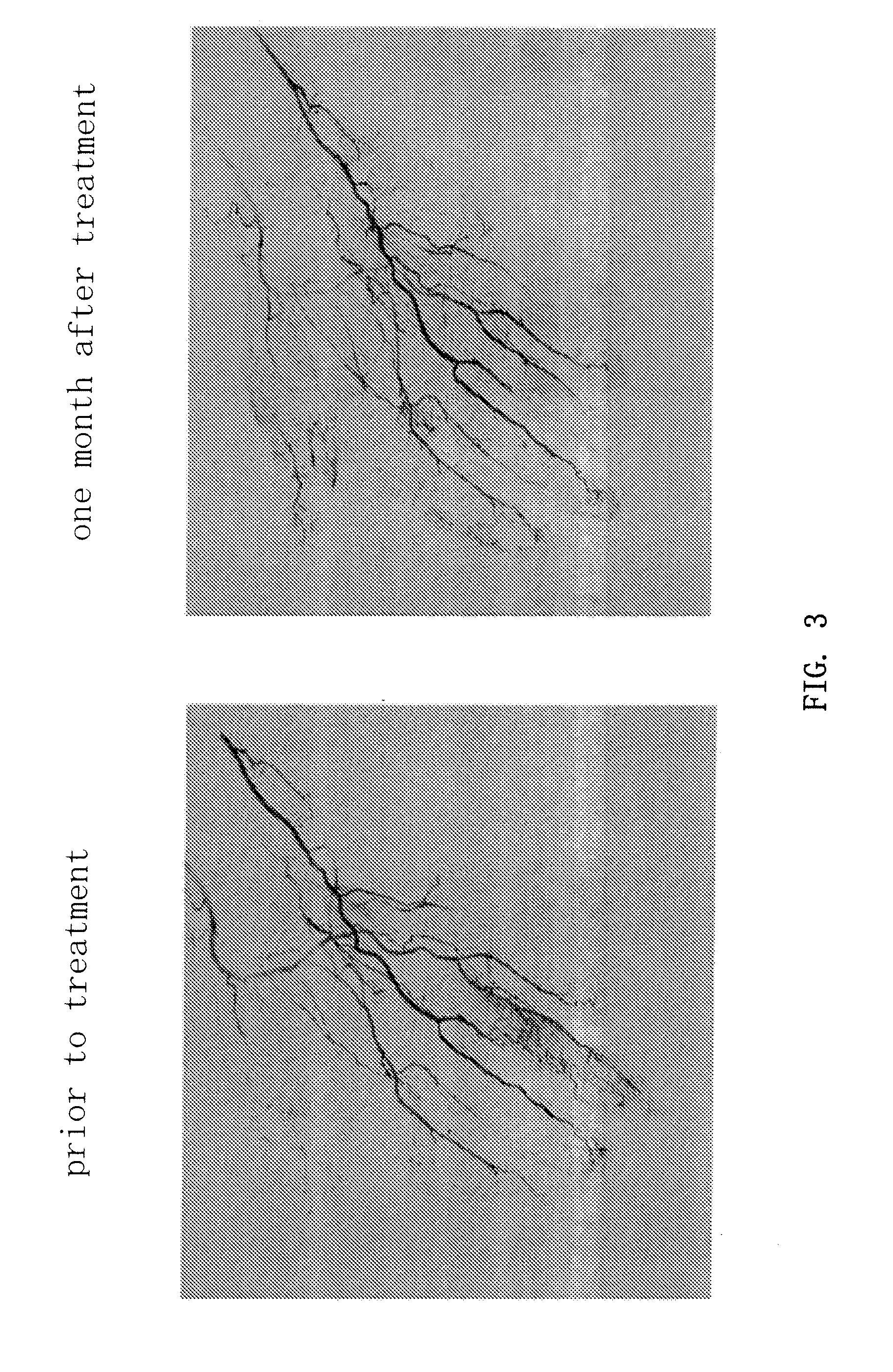Treatment of Ischemic Diseases Using Erythropoietin
a technology of erythropoietin and ischemic diseases, which is applied in the direction of peptide/protein ingredients, extracellular fluid disorder, peptide sources, etc., can solve the problems of imposing a substantial burden on the patient and the inability to provide effective treatment methods
- Summary
- Abstract
- Description
- Claims
- Application Information
AI Technical Summary
Benefits of technology
Problems solved by technology
Method used
Image
Examples
example 1
Mobilization of Hematopoietic Cells by EPO
[0073]Recombinant human EPO (Epogin (registered trademark), active ingredient: epoetin beta) was administered subcutaneously to mice (C57BL / 6, age: 9 weeks) once a day for 4 days at a dose of 100 μg / kg / day. Vehicle alone was similarly administered subcutaneously to the control mice. The mice were sacrificed on day 5 and peripheral blood cells (0.6 to 1 mL) were collected. Red blood cell lysing buffer (SIGMA) containing 8.3 g / L ammonium chloride in 0.01 M Tris-HCl buffer pH 7.5±0.2 was added as hemolyzing agent and let stand for 5 to 10 minutes at room temperature, followed by washing with 2% BSF+PBS(−). CD16 / CD32 (Fcγ III / II receptor) nonspecific reaction blocking antibody (BD-Pharmingen, San Diego, Calif.) was added at 1 μg / 106 cells and kept on ice for 30 minutes. FITC-conjugated anti-mSca-1 antibody (BD Pharmingen, San Diego, Calif.), PE-conjugated anti-mCD34 antibody, APC-conjugated anti-mc-Kit antibody (BD Pharmingen, San Diego, Calif.)...
example 2
Angiogenesis Therapy by Transplantation of Peripheral Blood Mononuclear Cells
[0077]This study was designed to investigate whether hematopoietic stem cells could be mobilized into the peripheral blood in 5 patients with severe ischemic extremity disease by the administration of an erythropoietin formulation. A clinical study of angiogenesis therapy by the autologous transplantation of peripheral mononuclear cells was also carried out. An open-labeled study protocol was employed for the general design of the clinical study.
[0078]The patients received 6000 U EPO by subcutaneous injection two weeks prior to the planned cell transplantation (first administration). One week prior to cell transplantation, blood was drawn (about 400 mL) for the purpose of autologous blood donation and 6000 U EPO was injected subcutaneously (second administration). On the morning of the day of the operation, 6000 U EPO was injected (third administration), followed by the separation of about 109 peripheral mo...
PUM
| Property | Measurement | Unit |
|---|---|---|
| Time | aaaaa | aaaaa |
| Time | aaaaa | aaaaa |
| Time | aaaaa | aaaaa |
Abstract
Description
Claims
Application Information
 Login to View More
Login to View More - R&D
- Intellectual Property
- Life Sciences
- Materials
- Tech Scout
- Unparalleled Data Quality
- Higher Quality Content
- 60% Fewer Hallucinations
Browse by: Latest US Patents, China's latest patents, Technical Efficacy Thesaurus, Application Domain, Technology Topic, Popular Technical Reports.
© 2025 PatSnap. All rights reserved.Legal|Privacy policy|Modern Slavery Act Transparency Statement|Sitemap|About US| Contact US: help@patsnap.com



